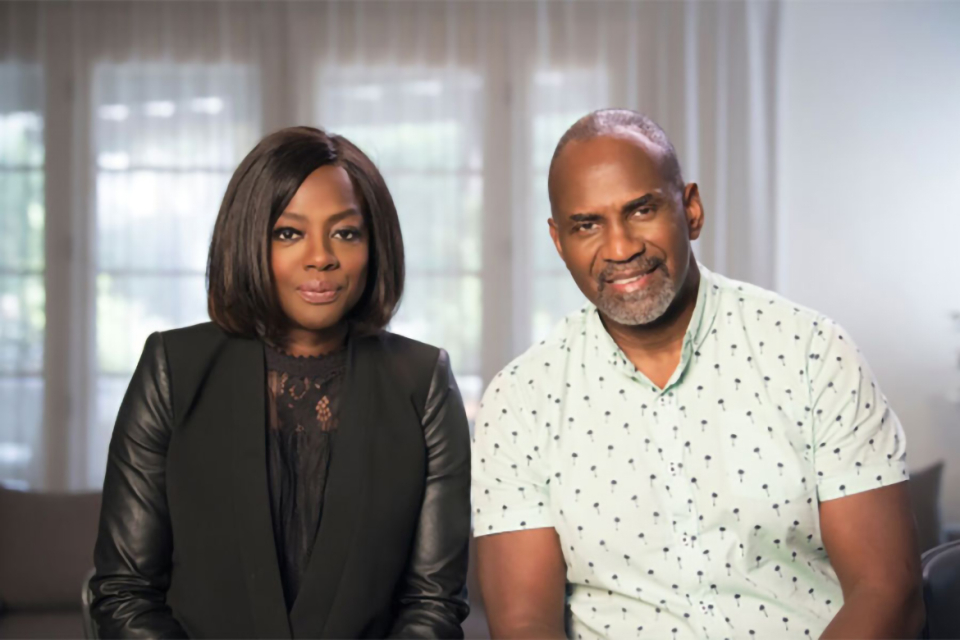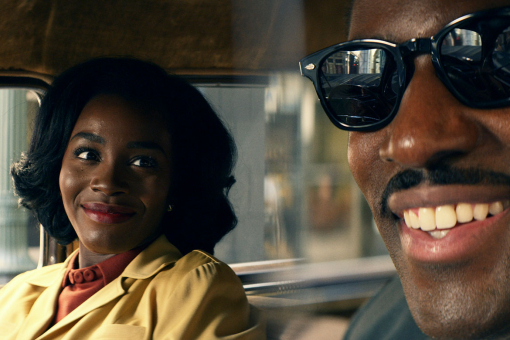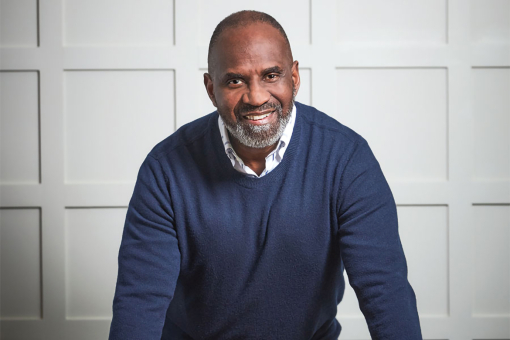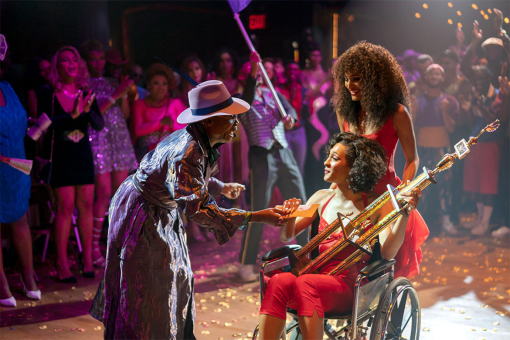It is said there are two sides to every story.
Problem is, both sides don't always get equal attention. A new docu-series, Two Sides, executive produced by Academy Award winner Viola Davis, her husband Julius Tennon (JuVee Productions) and Lemuel Plummer (L. Plummer Media) looks to remedy that.
Each one-hour episode of the TV One series focuses on four unique fatal police encounters during 2014-2015.
With narration by Davis, Two Sides analyzes and presents multiple points of view of the highly charged cases involving Eric Garner (New York), Ezell Ford (California), John Crawford (Ohio), and Sandra Bland (Texas). Their deaths led to protests across the nation and fueled the debate on police brutality and race. The Jan. 22 premiere episode featured the case of Garner, whose death ignited the "I Can't Breathe" movement.
"With Two Sides you'll hear how the incident transpired and how it affected change, or did not affect change. And, how the families are still being affected," said Davis and Tennon in a joint statement.
"This is a way for us to humanize these victims and not make them just a statistic. We also have to look at the other side of the story - our law enforcement's point of view. Let's come together and have a conversation around these issues so that we can come up with real solutions that will lead to positive change.”
43-year-old Eric Garner was choked and killed by NYPD officers while being arrested in the summer of 2014. The video of Officer Daniel Pantaleo putting him in a chokehold went viral. Although Garner’s death was ruled a homicide by the medical examiner, a grand jury has declined to indict Pantaleo.
Ezell Ford died in August 2014 after being shot three times in the back during a scuffle with Los Angeles Police Department Officers Sharlton Wampler and Antonio Villegas. Commissioners concluded that only one of the officers was justified in the shooting. The Ford family filed a lawsuit against the LAPD claiming $75 million in damages. The case was eventually settled out of court. Ford was 25 years old when he died.
John Crawford III was shot by officers after purchasing a BB gun at a Wal-Mart store in Beavercreek, Ohio. He was only 22 years old at the time of his death in August 2014. A grand jury failed to indict Officer Sean Williams and Sgt. David Darkow, leading to protests by the Black Lives Matter movement.
In the summer of 2015, Sandra Bland was found hanging in her jail cell after being arrested at a traffic stop three days prior. Her death was ultimately ruled a suicide but Bland's family disagrees.
In addition to family and friends discussing the circumstances leading to the victims' fateful encounter with police, law enforcement experts offer expertise and opinions on each incident with explanations of police regulations and procedures.
TelevisionAcademy.com contributor Ny MaGee recently spoke with Tennon and Plummer about how they hope Two Sides will be used as a daily tool to help ignite “real dialogue” among law enforcement and the communities affected by police brutality.
Talk about the creative process behind putting this series together.
Tennon: This stuff has been going on for a long time — this hot topic stuff. We know more about all of this now and we’re getting it in real time because of the internet. So this stuff is spreading all across our country.
So when Lemuel and the team came to us with this project, we really loved it ‘cause we want to fashion ourselves as being on the pulse of what’s happening in our society and so we jumped on board. Viola was very moved by this topic and we wanted to be a part of it.
That’s the genesis of how it kind of happened. Lemuel and his team did a lot of the hard work, getting the people and putting things together and then we just collaborated back and forth and came up with this incredible series.
Plummer: This show was a passion project for both Julius and I, and putting this together had its challenges because it’s always difficult to get both sides of a story with instances like this, fatal police encounters. We recognized that this has never been done. We wanted to take a completely different creative approach with how we shot it, cinematically. How we produced it. How we edited the show together.
We didn’t want this to be a typical, traditional crime-investigative show. We wanted it to feel very cinematic. We wanted to eliminate reenactment so we shot very atmospheric. That really took you to the incident so you could take your imagination there and experience kind of what’s happening with the way we shot footage.
In the editing process, it was very challenging because it was hard to balance the show and kind of give both perspectives but I think we accomplished that very successfully. It’s not manipulated. We’re taking a deep dive and you’re hearing from both sides. The creative process was challenging, and even selecting the cases was also challenging, but we were able to produce it in a successful way and make it work.
Did the creative team experience any pushback from law enforcement?
Plummer: It was much easier to get the family members of the victims to participate. You usually don’t see police officers, or police-adjacent folks participating in these types of situations because it’s always manipulated. They’re always kinda getting a bad rap. I think people are interested to hear their perspective but people come to their own conclusions.
Most of the times they’re not really able to speak ‘cause most of these cases are still being processed in the court system. So we were able to get either attorneys, the actual lieutenants or really high-profile individuals from law enforcement to participate. But it was challenging ‘cause they really wanted a fair opportunity to give their perspective and I think they trusted the producers to deliver on that and I think we did.
Do you have a personal connection to themes explored in Two Sides?
Tennon: I don’t directly but I think it touches our communities. We all hear about these stories. We may not directly know folks but I know in my community, I’m from Austin, Texas and I’ve known people in the community who have been affected this way. So it touches all of us in some kind of way, even if it’s not directly, it’s our community, and they don’t seem to be random. They seem to be more regular than normal. We’re all touched.
In what ways do you hope young activists are inspired by this series?
Plummer: I’m still a millennial so I hope this truly brings hope and inspiration to my generation to look at these stories, look at both sides — whether you’re pursuing being a police officer or you’re an activist or you’re experiencing this as a family member of a victim — to just take away understanding and learning that there are a lot of components to what happens during these fatal police encounters, and that they can understand how police officers should be if they are pursuing being a police officer.
How it affects the community. How it affects families. Family members can understand how they need to understand how police officers are thinking, what they expect and how they can understand both sides and start real dialogue with all sorts of people so that this whole situation could end and we don’t have to deal with these types of incidents.
Tennon: These young activists can interface with police in their community and the activists in their community. That they create dialogue so that they become more normal to them instead of being fearful of cops and suspicious of cops.
I think these young activists in their communities should start interfacing more with police because they’re there to protect and serve and I think the more we make that more normal in our communities then it’s going to let the guards down to some degree. And also, our young people need to understand about voting.
We gotta teach our young activists that they gotta be out there pushing other young people to vote in the local elections and all that, ‘cause it makes a difference who’s in those seats and in those positions that could make substantive changes within the community and then pass that on to police forces so we start working in concert. It’s not going to happen overnight but you gotta start somewhere.
Those kinds of things are the kinds of things that are going to make a difference in our communities across the country.
Do you believe this series somehow holds a solution to these police-involved deaths, even though many unanswerable questions might remain?
Tennon: I don’t know that the series holds that. I think the series is presenting a truth of what happens and then we’re just trying to get a balanced look from both sides to create conversations so people can start talking and try to figure out what we can do to stop this madness because that’s what it is. It’s madness.
I think it’s going to touch people in a way but I don’t know that we’re thinking we’re going to solve anything. We have to talk and keep talking and keep moving forward.
Plummer: I look at this show as a tool for daily help to understand both sides. This isn’t going to change overnight but I think it is a tool to help move us forward and it’s a tool that will start real dialogue on both sides.
Was working on Two Sides transformative for you?
Tennon: In all the cases, some things seem kind of cut and dry and that’s why it’s called Two Sides. I don’t want to spoil it, but in a particular episode, I had a different feeling about the way it went down and so that makes me then be able to look at it in a different way than I had looked at that particular case when we were going into it.
And so that’s what it’s going to do to people. It’s going to make people think. Everybody draws their own conclusions. I certainly had but that’s what we intended for it to do.
Two Sides airs Monday nights at 10/9c on TV One. Download the TV One app to watch full episodes of the series.











